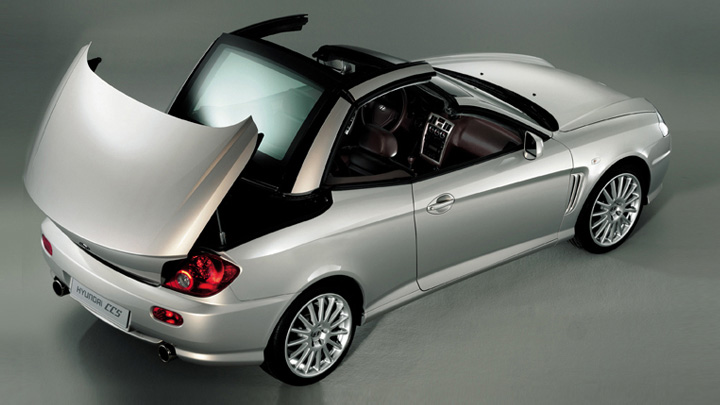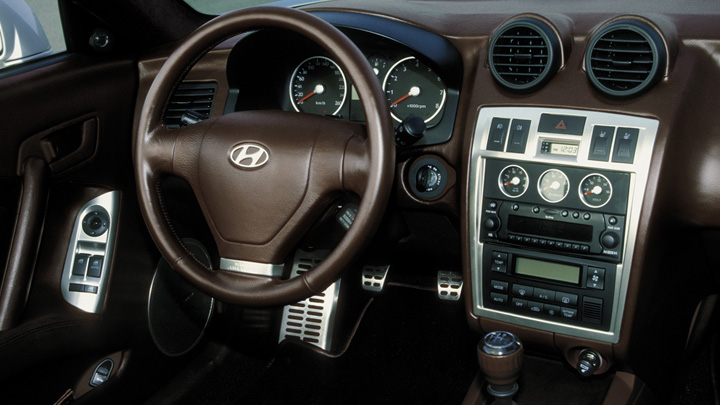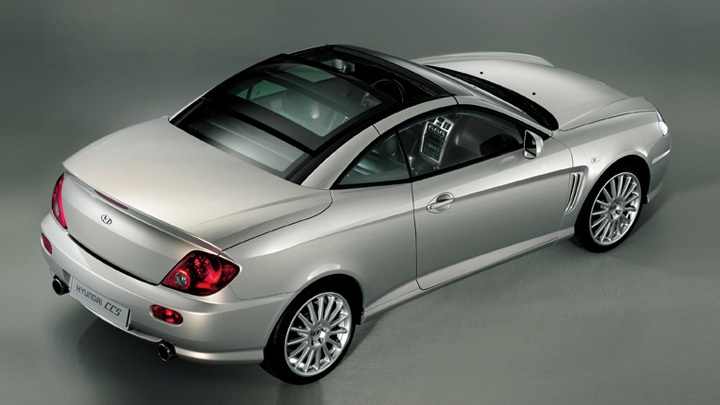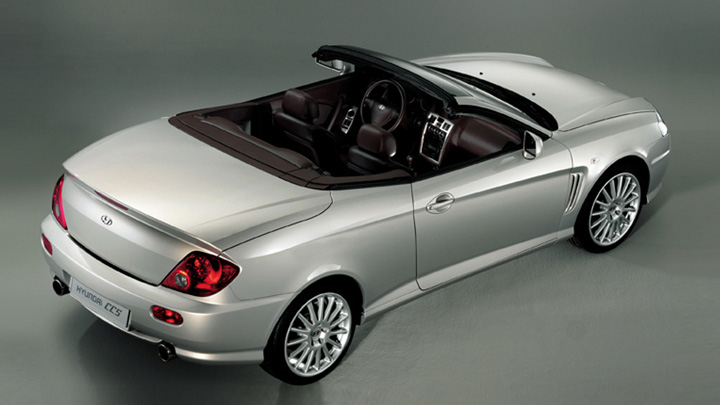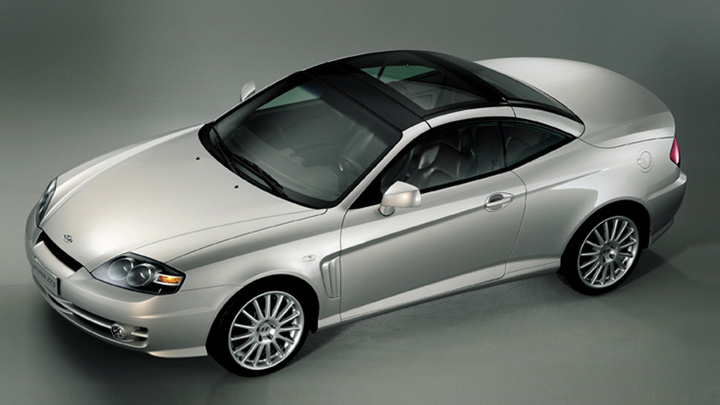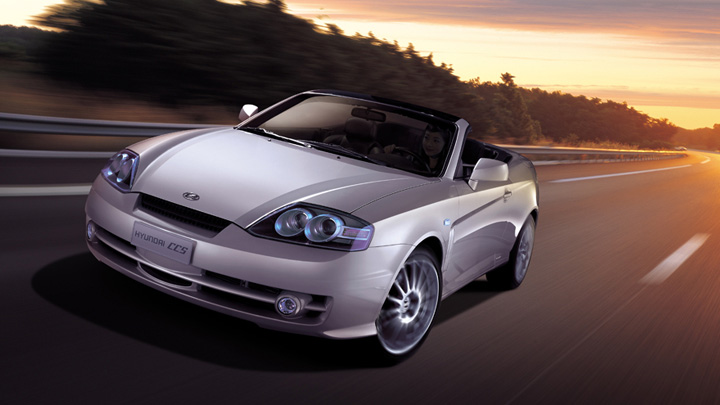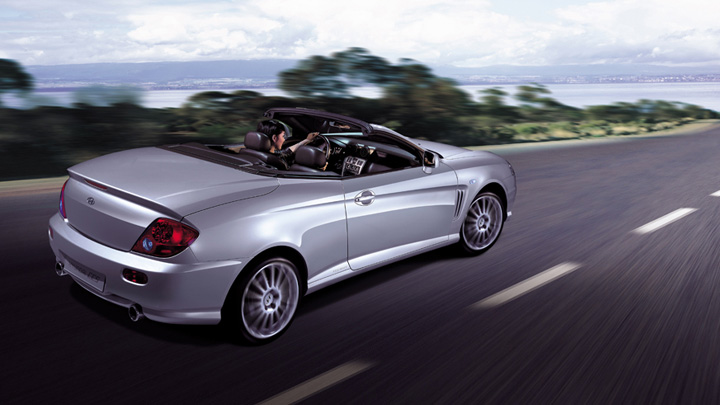In folding roof terminology the slide and folding roof system of the Hyundai CCS is the third generation. The first generation was the typical metal folding roof, the second the retractable glass roof. This third generation builds on the experience gained with the first two and refines it to offer maximum choice of open-air motoring. In mixed weather the driver merely touches one button send the glass roof sliding back over the rear window. By sliding outside, rather than inside, this maximizes rear headroom. At this stage the side supports remain in position, so if the weather changes the roof slides quickly and smoothly back to the closed position. From open roof to full convertible configuration demands only the touch of a second button. This folds the rear screen with the forward roof supports under the forward opening rear decking, while at the same time adjusting the sliding roof panel in relation to them to give maximum luggage space.
An added beauty of the system is that is also remote controlled. The whole process is elegantly engineered and appears deceptively simple. Yet this same simplicity is a key to the superiority of this system over all that preceded it. Importantly the system has less moving parts and less pivot points than earlier systems. The result is that operational efficiency is increased, weight is reduced and the parcel shelf moves only within a single plane rather than lifting or twisting. The study also demonstrates another major advantage of the system insofar as the weight increase over the normal Coupe, including all hydraulic and electric components, has been kept below 140 kg. One fascinating aspect of the roof is the potential for further development. Solar panels, or similar energy sources, are more easily assimilated than into more complex structures. Other materials, and lining methods, can be incorporated without compromising the essential benefits of the structure, so adding even more flexibility. In fact the Hyundai CCS study could well be seen as merely the first step on a long journey of technological benefit and refinement.
